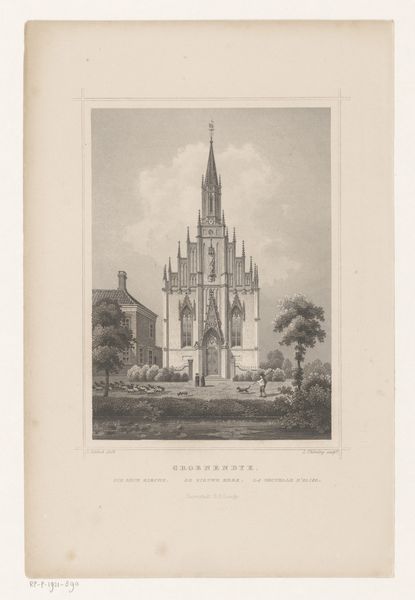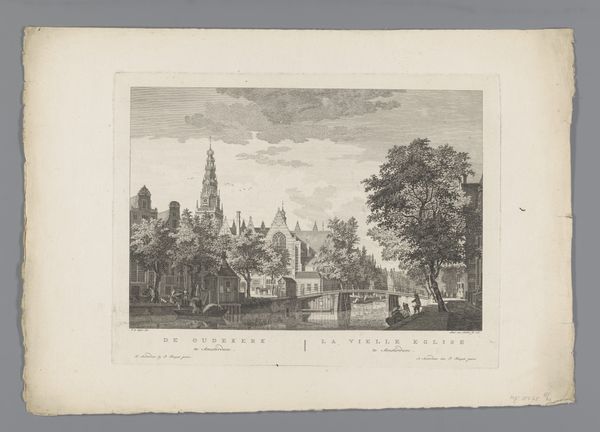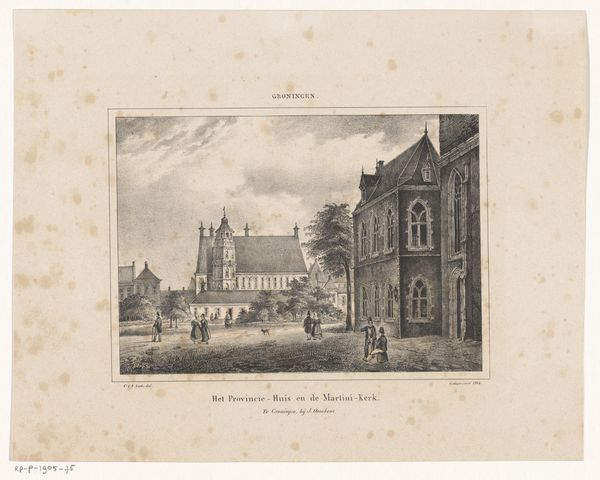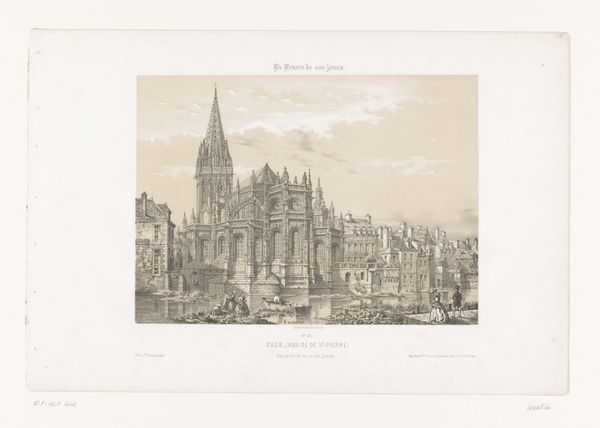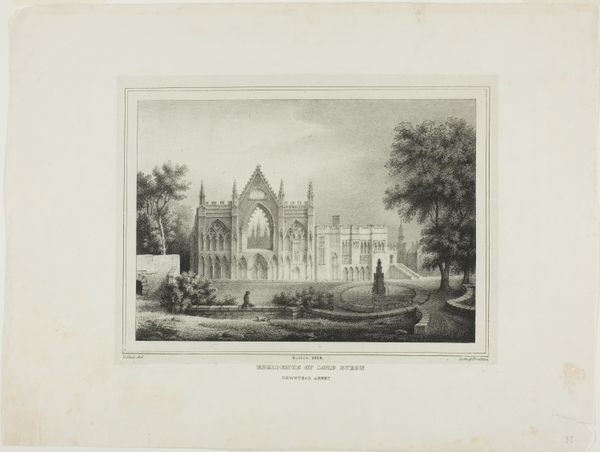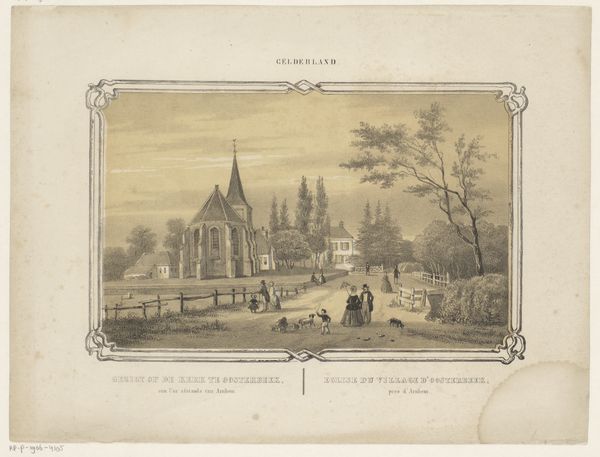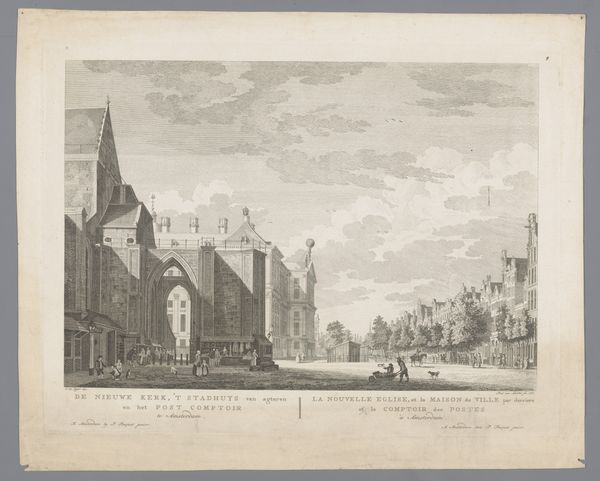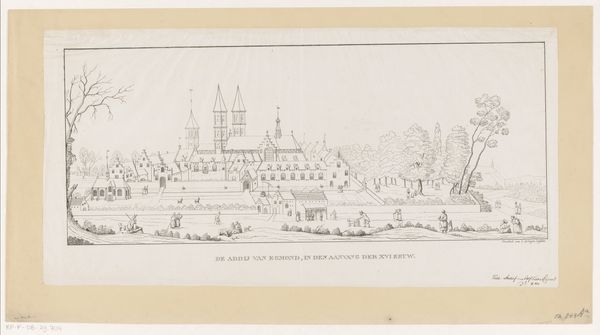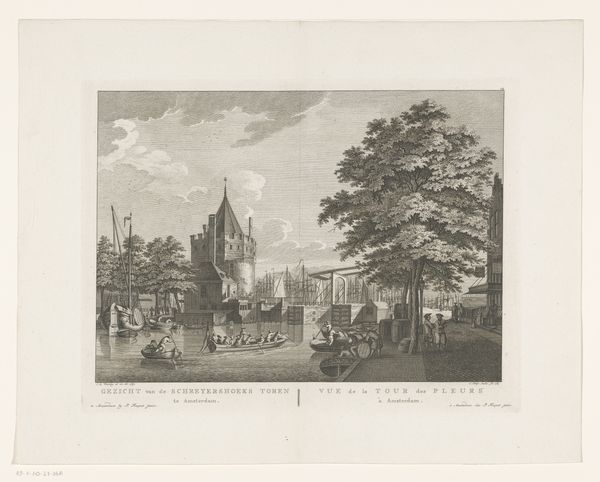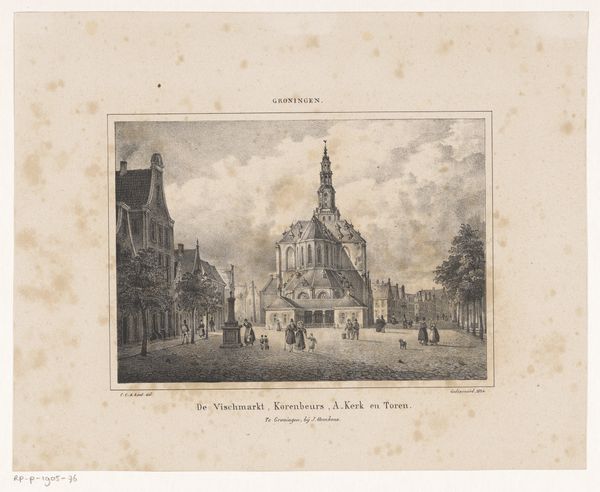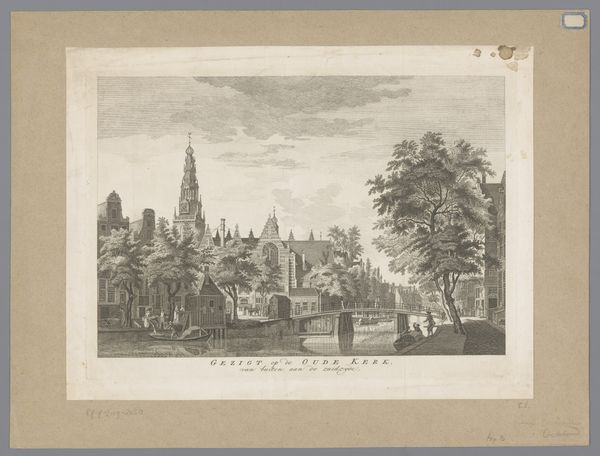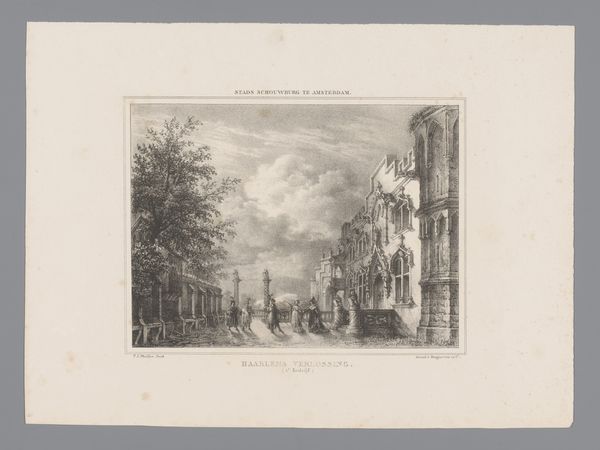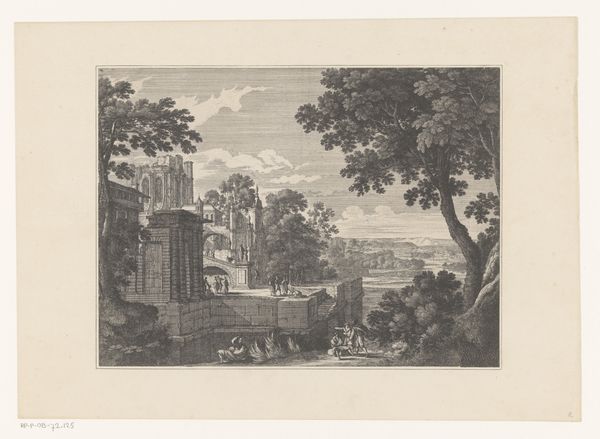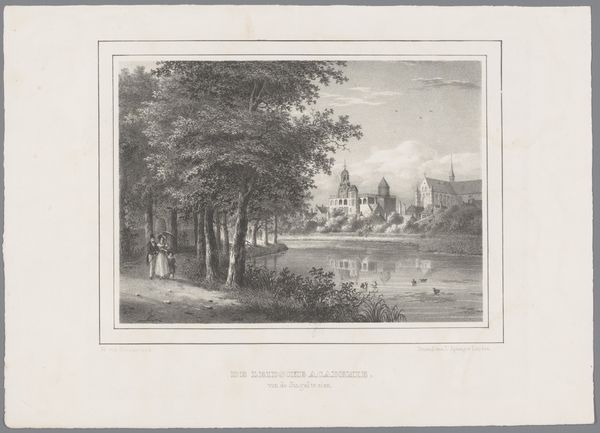
Ontwerp voor het monument ter herdenking van Albert van Saksen-Coburg en Gotha 1863
0:00
0:00
Dimensions: height 401 mm, width 539 mm
Copyright: Rijks Museum: Open Domain
Curator: The somber quality of this engraving is striking. It's called "Ontwerp voor het monument ter herdenking van Albert van Saksen-Coburg en Gotha", or Design for the Monument in Memory of Albert of Saxe-Coburg and Gotha, created in 1863 by Mason Jackson. Editor: Monumental is right! It feels so heavily burdened with Victorian grief and imperial ambition, even in this sketched form. Who exactly was Albert of Saxe-Coburg and Gotha? Curator: Prince Albert was Queen Victoria's husband. After his untimely death, she commissioned many memorials, with the most famous being the Albert Memorial in London. This print appears to be one potential design. Editor: Ah, Victoria! Always in mourning, yet so incredibly powerful. I see a statue of Albert nestled under what appears to be a neo-Gothic canopy. Is there anything culturally unique about the inclusion of historical symbols in a print like this one? Curator: Certainly. Neo-Gothic architecture, which we see quite evidently here, was very popular for commemorative structures. Gothic was viewed as being linked to high morality. By reviving its visual codes, people reinforced their image of the Royal Family as connected to that nobility. We see Albert placed reverentially beneath, quite literally representing both earthly regality and an aspired connection with a higher plane of existence. Editor: A not-so-subtle way to connect Prince Albert to an elevated past and further affirm a shaky modern identity. The public gathered at the base feels important too. I wonder how the memorial landscape influenced people's awareness and feelings toward British national identity. Curator: The way the public populates the foreground does lend the memorial further relevance in light of your question. These individuals underscore the human component. I think of such works as an attempt to render emotional and political ideals visually and physically permanent, ensuring the continuation of collective cultural memory. Editor: Yes, it truly reflects that very Victorian need to materialize grief into something enduring and impressive. It definitely provokes questions about how societies choose to memorialize—and who gets to decide what is worth remembering. Curator: It is a fascinating design with many visual clues to examine more closely, as you stated. Editor: Indeed, and it really shows the links between art, memory, and national narratives.
Comments
No comments
Be the first to comment and join the conversation on the ultimate creative platform.
